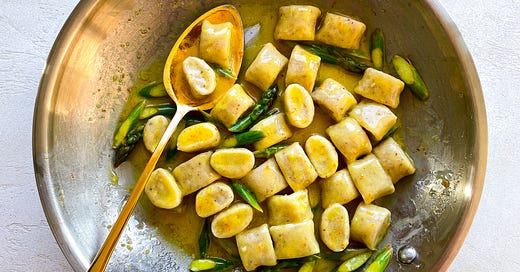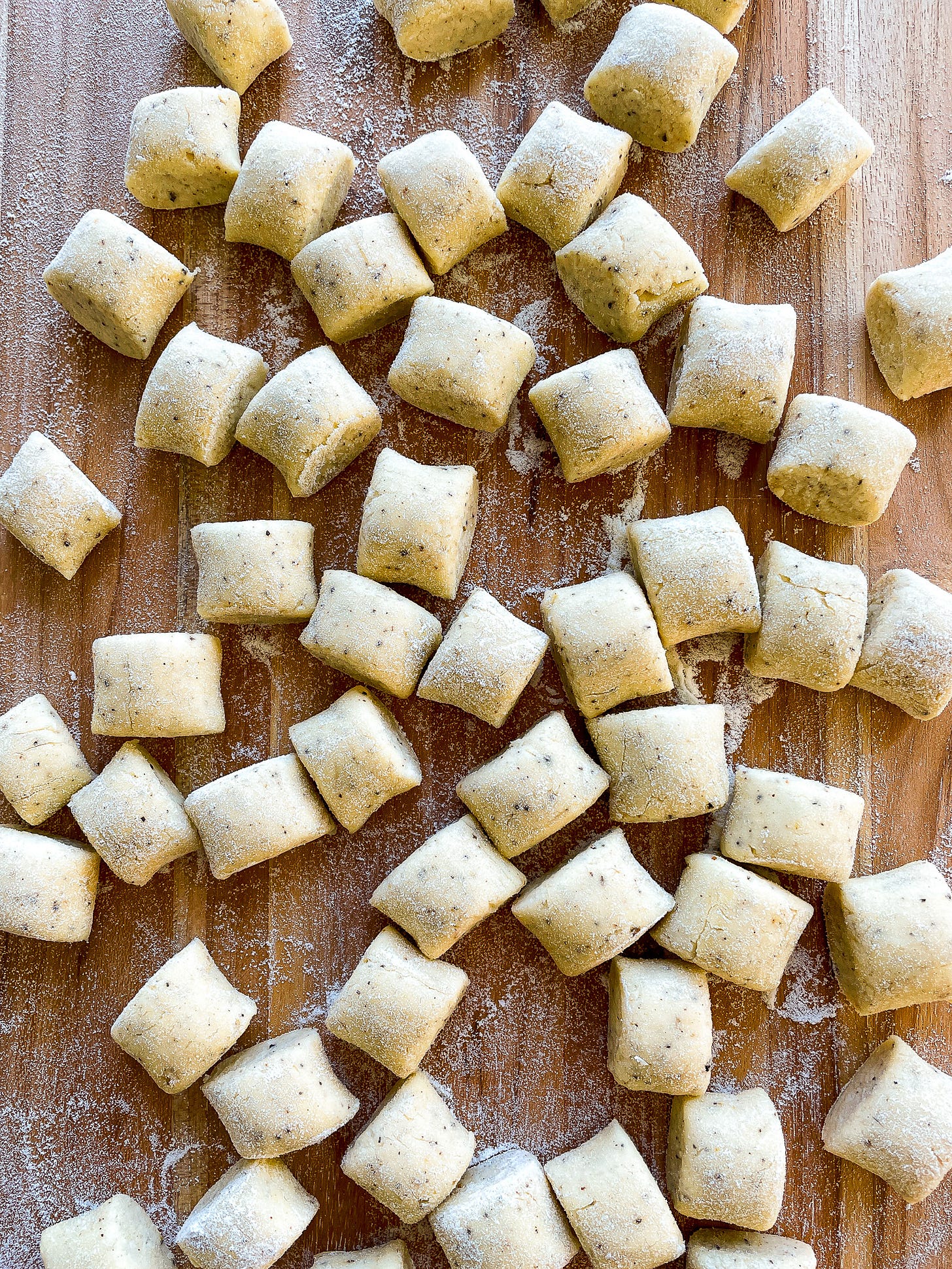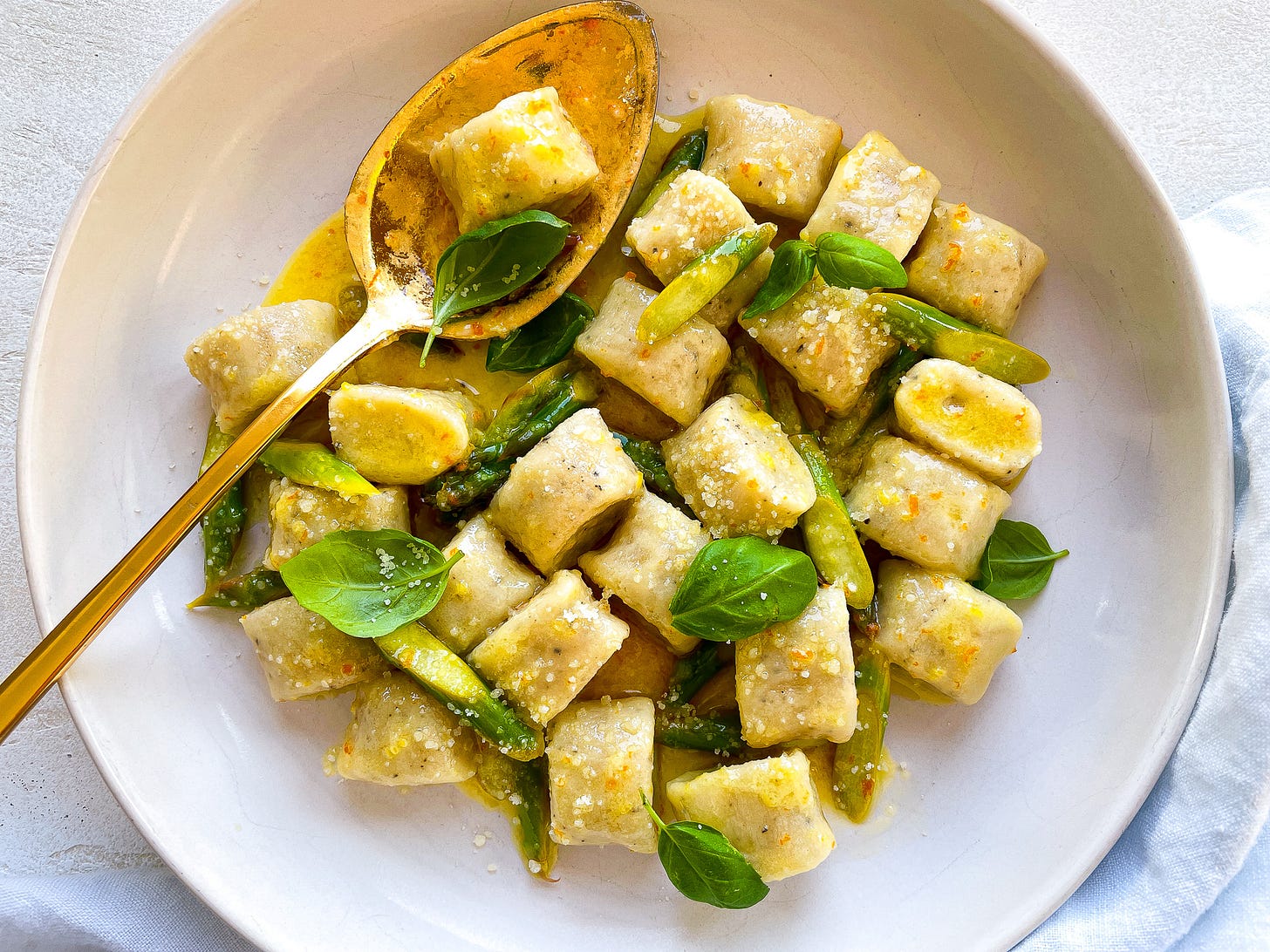As someone who has dedicated years of their life to the big wide world of pasta, you might think I don’t play favorites. (How can a mother possibly choose between her children?) But that would be a lie. Ask me about my favorite pasta shape and I’ll answer without hesitation (orecchiette, for fresh; bucatini, for dry, by the way). Ask me about my favorite sauce—my favorite dish—and I might, for a moment, be tempted by something spicy, or a rich ragù, but in the end it’s always the same: cacio e pepe.
This answer is bound to receive a few eyerolls, and I wouldn’t blame you. Cacio e pepe seems to be everyone’s favorite, and so popular has it become that anything—rather, everything—can tout its name. Today, cacio e pepe is more of a concept than a dish, and one that doesn’t even require pasta at all: popcorn, crackers, cheese puffs, dips, spice blends, even kale chips can claim cacio e pepe status. I’d say cacio e pepe is having a moment, but at this point that moment has frozen in time and stretched, stretched, stretched into years and years and years. Now that America has fully embraced the magic that can be made of these two simple ingredients, it’s not going anywhere—and, kale chips aside, for that I am grateful.
I’d say I was late to the cacio e pepe party. It came into my life before the current craze, but I was still well into my 20s. It was, I think, about a decade ago, and I was living in Chelsea, in New York City, only a short walk from Eataly’s Flatiron location. Even then, when I should have been doing far more interesting young-person things, spending the day at Eataly was a highly exciting weekend activity. On one such excursion, my now-husband suggested that, after admiring a display of vinegars, we stop by each of Eataly’s various restaurants and try something new (if I didn’t already, I knew then that he was the one for me). Unsurprisingly, the pasta counter was our first destination. I don’t remember if I looked at the menu and asked my now-husband what cacio e pepe was, or if he asked me first if I’d had it before. Regardless, he said it was one of his favorites and that I would probably like it, too, so I ordered it. As the first burst of salt and spice hit my tongue, probably became definitely. Like became love.
Perhaps I shouldn’t admit that my introduction to cacio e pepe was in a chain food store rather than in Rome, its heartland, or even in Florence, coating thick strands of handmade pici. But it’s the truth, and a good reminder that there are always new delights to discover, at any age, in any place. And although it might be my rose-colored glasses, I still think that first plate of cacio e pepe, devoured between rows of tinned tomatoes and bags of taralli, was one of the best I’ve ever had—even after enjoying the dish in Rome, and in Florence, and in at least a dozen acclaimed restaurants. And now, regardless of its simplicity and my ability to make it at home, it’s still the dish I’ll order at any good restaurant that serves it—not to criticize or compare, but simply to enjoy.
Today’s recipe is not the first time I’ve played around with this signature duo of pecorino and pepper. Last August, I paired the two with sweet, high-summer corn; in my cookbook, there’s a cacio e pepe-meets-al limone sauce that’s got a little salt, a little spice, and a little zing. Still, I think it’s high time I riffed on this beloved combination once again. Instead of focusing on sauces, however, I’m turning the outside in and infusing those flavors into the pasta itself. And what better vehicle for pepper and cheese than, well, more cheese?
Ricotta gnocchi live in the shadow of their more popular potato cousins, but—since we’re already playing favorites today—I almost always prefer them. They’re quicker and easier to make, and have a toothsomeness that potato gnocchi often lack. I’ve enjoyed my fair share of feather-light, pillowy gnocchi, but in the end I’ll easily opt for pasta with a little bite. And ricotta gnocchi bite back. Here, I’ve taken my usual ricotta gnocchi dough and cacio e pepe-fied it, then dressed the dumplings in a citrus-flavored butter and diamonds of asparagus for a spring-forward finish. It might appear to be cumbersome, but I assure you that if you ever wanted to make fresh pasta on a weeknight, ricotta gnocchi would fit the bill—though, of course, they can also be prepared and frozen in advance. Either way, I hope that even if you’re well over the world’s cacio e pepe obsession, you’ll consider giving this dish a try. It might just remind you how good it can be.
Cacio e Pepe-Style Gnocchi
Serves 2 to 4






